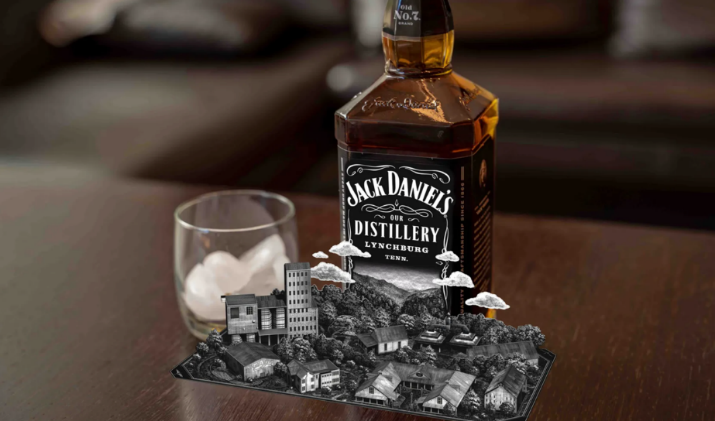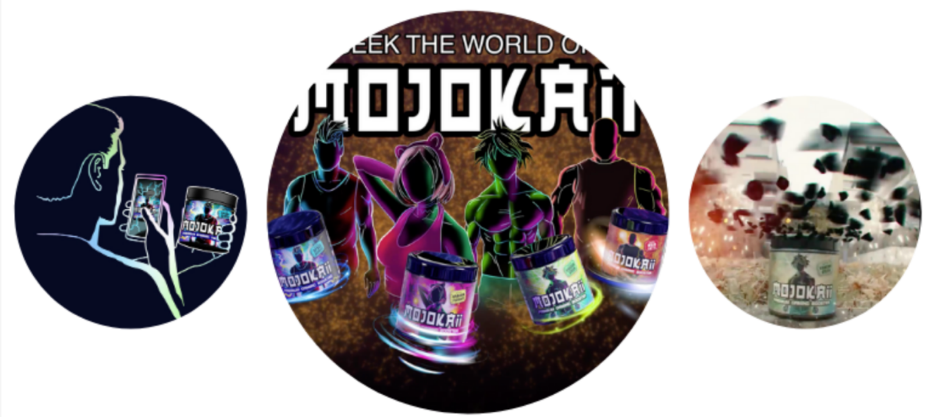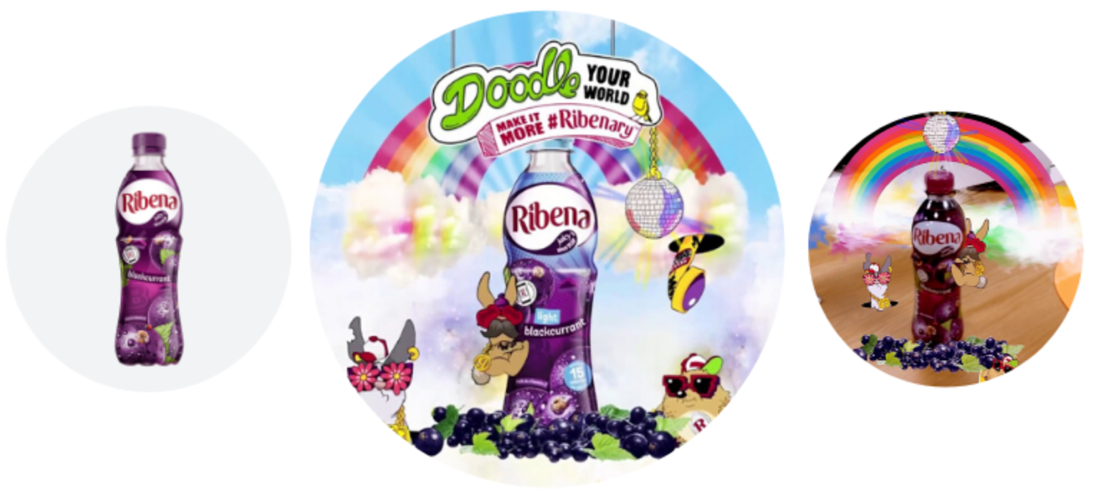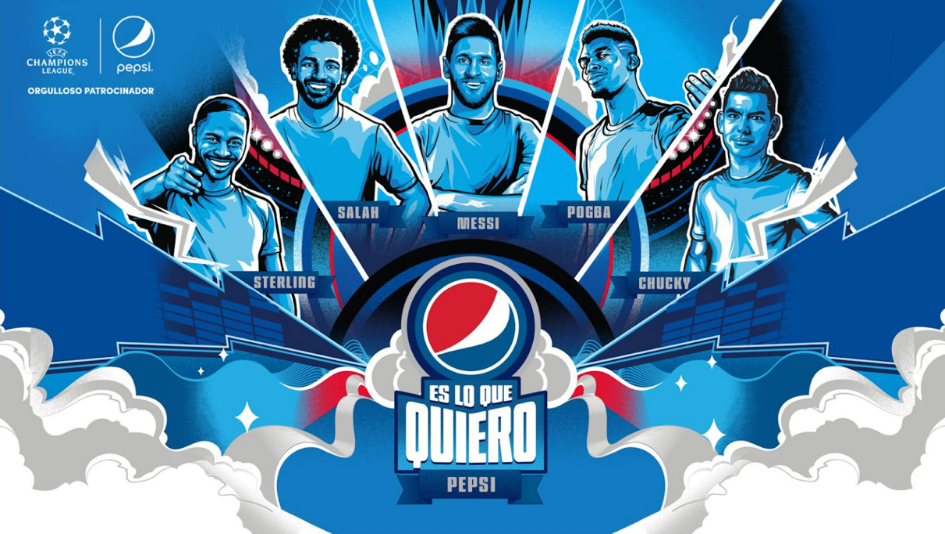1. Introduction
The integration of AR with Intelligent Packaging is a growing field that aims to provide consumers with more engaging and interactive experiences. The exploration of AR on Intelligent Packaging has significant research value and practical significance. From a research perspective, an innovative and value-generating path for the packaging industry is the integration of augmented reality with intelligent packaging. It provides a chance to investigate the effectiveness of AR and its effects on consumer behavior, brand loyalty, and product differentiation. From a practical perspective, businesses stand to gain significantly from the use of AR in intelligent packaging. Additionally, AR can aid businesses in differentiating their goods and improving the perception of their brands, both of which can increase revenue and profitability [1-2].
Moreover, the integration of AR with Intelligent Packaging can address sustainability and safety issues by enabling consumers to access information about the product's origin, ingredients, and environmental impact. Overall, the exploration of AR on Intelligent Packaging is a valuable and significant research topic with practical implications for the packaging industry and beyond [2].
The market size of augmented reality (AR) has been growing rapidly in recent years. The report “Augmented Reality in Retail Market By Component” estimated that the market for augmented reality in retail will expand from a value of $2 billion in 2021 to $61.3 billion by 2031, with a CAGR of 41.4% during that period [1]. In the other hand, the global packaging market size has been increasing steadily in recent years, due to a growing demand for consumer goods, as well as advancements in packaging materials and technologies. According to a report by Grand View Research, the global packaging market size was valued at $917.2 billion in 2020 and is expected to reach $1,077.6 billion by 2028, growing at a compound annual growth rate (CAGR) of 1.8% during the forecast period. The AR technology achieved a cross-industry development. This essay examines the various ways in which AR can be integrated into intelligent packaging, including interactive product demonstrations, gamification, providing product information, and sociability. Real-life examples of how AR is being used in packaging by major brands are also discussed. The essay concludes by highlighting the potential benefits of AR on intelligent packaging, including increased consumer engagement, improved brand recognition, and enhanced product information.
2. Development of AR + intelligent packaging
2.1. Argument reality
Augmented reality is a leading-edge technology that has been gaining increasing attention and popularity in recent years. It is a technology that presents users with an improved perception of reality by digital data and virtual content over physical world. This technology scans the environment with cameras or sensors before displaying pertinent information in real time. The potential uses for augmented reality are numerous and varied, and they have the power to alter how we interact with our surroundings and technology [1].
2.2. Intelligent packaging
Intelligent packaging is a technology that has gained more and more popular in recent years due to its potential to enhance the functionality and practicality of packaging. Intelligent packaging use multi-sensors to check the condition of the package and its contents, and company will record those data. The data collected from the packaging can be used to optimize the supply chain, reduce waste, and improve the overall user experience.
2.3. Argument reality + intelligent packaging
When argument reality comes to packaging, AR can be used to provide a more engaging and interactive experience for consumers. By incorporating AR features into product packaging, brands can create a unique and memorable experience for consumers, while also providing additional value and information about the product [3].
3. The application of AR on intelligent packaging
3.1. Providing product information
One of the key benefits of augmented reality (AR) in intelligent packaging is its ability to provide consumers with detailed product information. With the use of AR-enabled devices, consumers can scan the packaging and instantly access information such as ingredients, nutritional value, and instructions for use. This not only provides consumers with a more convenient and efficient way to access product information, but also enhances the overall shopping experience. AR can also be used to provide more immersive and interactive product information, such as 3D models and animations, which can help consumers better understand the product and its features. Jack Daniel's: In 2019, Jack Daniel's launched a special edition packaging for its whiskey that included augmented reality features (Figure 1). When consumers scanned the packaging with their smartphone, they could access a 3D virtual reality tour of the Jack Daniel's distillery. By providing detailed product information through AR, companies can improve consumer trust and loyalty, and enhance the perceived value of their products. Additionally, by providing more transparency and information about the product, AR can help companies meet increasing consumer demands for sustainability and ethical sourcing, as consumers are increasingly concerned with the environmental and social impact of the products they purchase. With the points above, retailers can save money by cutting back on personnel, since costumers are able to know everything about the product by simply scan a QR code on the packaging [4].

Figure 1. Jack Daniel's launched a special AR packaging.
3.2. Gamification
Another way in which augmented reality (AR) can be used in intelligent packaging is through the incorporation of gamification. Gamification involves using game-like elements, such as points, challenges, and rewards, to engage and motivate consumers. By integrating AR into packaging, companies can create interactive and entertaining experiences for consumers, which can enhance brand recognition and increase consumer engagement. For example, a food packaging company could create an AR game that challenges consumers to find hidden ingredients or solve puzzles related to the product. A practical illustration of gamification is the development of Mojokaii premium gaming boosters. The Mojokaii AR companion app makes tasting fun and encourages users to acquire all product variants in order to capitalize on the target audience's preference for immersive experiences (Figure 2). An worldwide group of visual effects artists produced the augmented reality effects. By pointing to the packaging label, gamers fall into an immersive digital tale, unique for each product variant [5-6].
By incorporating a fun and engaging element into the packaging, the company can increase brand awareness and encourage repeat purchases. Additionally, by using gamification, companies can gather valuable data on consumer behavior, preferences, and interests, which can inform future marketing and product development strategies. The use of AR-enabled packaging to provide gamification not only enhances the consumer experience, but also provides companies with an opportunity to differentiate themselves from competitors and stand out in the market [5].

Figure 2. Mojokaii AR companion app.
3.3. Sociability
In addition to providing product information and gamification, augmented reality (AR) can also be used in intelligent packaging to enhance sociability. Sociability refers to the ability of AR to connect consumers with others and create shared experiences. For example, AR-enabled packaging can allow consumers to create and share personalized content related to the product, such as photos or videos. This can enhance the social aspect of the shopping experience and increase brand engagement. Additionally, AR can be used to create shared experiences with friends and family, such as games or challenges that can be completed together. For a real-world example for sociability, Ribena developed the "Doodle your World" app to offer a fun augmented reality experience in order to give life and user involvement to their "doodle bombing" inspired campaign (Figure 3). Using the vibrant Ribena character animations, app users are encouraged to make their own doodle-bomb videos that they can share with friends via messaging and social media sites like Facebook, Instagram, and WhatsApp [6]. This not only enhances the fun and interactive nature of the packaging, but also encourages social interaction and connection. By providing sociability through AR-enabled packaging, companies can tap into the growing trend of social media and online communities and create a more personalized and engaging shopping experience. This can ultimately lead to increased brand loyalty and advocacy, as consumers are more likely to share and recommend products that provide a positive and engaging experience [5].

Figure 3. Ribena developed the "Doodle your World" app.
3.4. Interactive product demonstration
Another way in which augmented reality (AR) can be used in intelligent packaging is through interactive product demonstrations. By using AR-enabled packaging, companies can create immersive and engaging product demonstrations that allow consumers to see and experience the product in a more realistic and interactive way. For example, a makeup company could use AR to allow consumers to virtually try on different shades and products and see how they would look on their own face. This not only provides a more engaging and personalized experience for the consumer, but also allows the company to showcase the benefits and features of their products in a more effective way. A real-world example is that Coca-Cola is launching its holiday-themed promotions with its first significant augmented reality (AR) experience (Figure 4). An immersive computer-generated vision of the Coke polar bears' "arctic home" will be displayed to smartphone users once they scan specially tagged cans and bottles with the Coca-Cola mobile app [3]. Additionally, by providing interactive product demonstrations through AR, companies can reduce the need for in-store product testing, which can be time-consuming and costly. This can ultimately lead to increased sales and a more efficient and cost-effective marketing strategy. By using AR to provide interactive product demonstrations on packaging, companies can create a more engaging and effective way to showcase their products and enhance the overall shopping experience for consumers [6].

Figure 4. Coca-Cola’ AR experience - polar bears' "arctic home".
3.5. Business cooperation
Another way in which augmented reality (AR) can be used in intelligent packaging is to promote business cooperation. By partnering with other companies and organizations, companies can use AR-enabled packaging to promote joint marketing initiatives and cross-promote products. AR is being used to promote business cooperation through intelligent packaging is the collaboration between Pepsi and UEFA. Pepsi launched an international marketing campaign that brings together four football superstars (Figure 5). The players will be featured on limited-edition packaging for Pepsi and Pepsi Black/MAX cans. The cans contain QR codes that, when scanned, reveal augmented reality (AR) representations of Messi, Pogba, Salah, and Sterling. These players can then engage in a game of keepie uppie, in which players attempt to juggle a soccer ball in the air for the longest possible time. Users can post their scores via Instagram Stories thanks to the activation [7]. By providing business cooperation through AR-enabled packaging, companies can create mutually beneficial partnerships that help to expand their customer base, and generate new sources of revenue [7-8].

Figure 5. Pepsi and UEFA – special edition cans.
4. The comparation of AR + packaging and traditional packaging
Augmented Reality (AR) on intelligent packaging provides a more engaging and interactive experience for consumers compared to normal packaging. AR on intelligent packaging can display interactive content such as 3D animations, games, or videos, which can educate consumers about the product, provide additional information, or create a fun and engaging experience [9]. However, intelligent packaging does need more cost. For the hardware side, company have to pay the cost for various senser. For the software side, the potential wage costs are huge, since company need extra programmers or designers.
5. The exploration of AR on intelligent packaging
Augmented Reality (AR) has already shown great potential in enhancing user experience and providing interactive content on intelligent packaging. As technology continues to advance, here are some potential future development trends of AR on intelligent packaging:
Personalization: With the ability to store and analyze consumer data, intelligent packaging can provide personalized AR experiences to users. For example, personalized nutrition information, customized recipes, or tailored product recommendations can be displayed on the packaging via AR.
Sustainability: As consumers become more conscious about the environmental impact of packaging, AR can be used to educate and encourage sustainable behavior. For example, AR can provide information on how to recycle or upcycle the packaging or suggest eco-friendly alternatives [10].
Multi-sensory experiences: AR can be used to provide multi-sensory experiences on intelligent packaging, engaging all senses beyond just sight. For example, the packaging could emit a fragrance or play a sound when scanned with AR.
Digital transformation: AR packaging will help companies to achieve digital transformation. Since companies can “force” customer to download certain APP to scan the packaging for experience AR feature on packaging.
Overall, the potential for AR on intelligent packaging is vast, and as technology continues to advance, we can expect to see even more creative and engaging AR experiences on product packaging.
6. Conclusion
The essay introduced the background of AR on intelligent packaging, organizing the use of AR on intelligent packaging with relative real world examples, and look ahead of the future of the AR + intelligent packaging. In conclusion, the use of augmented reality (AR) in intelligent packaging provides a range of benefits for both companies and consumers. By leveraging AR-enabled packaging, companies can create more engaging and interactive experiences for consumers, increase brand awareness, and differentiate their products in a crowded market. In addition, AR can provide valuable product information, gamification, sociability, interactive product demonstrations, and business cooperation opportunities.
Compare to regular packaging, the use of AR on packaging has a great potential, even though the earlier stage for company is hard, however, the benefits are limitless. As AR technology continues to advance, and more companies adopt intelligent packaging, it is likely that we will see even more innovative and exciting use cases emerge. From personalized product recommendations to augmented reality-based loyalty programs, the possibilities for AR on intelligent packaging are endless.
References
[1]. Businesswire. The Worldwide Augmented Reality in Retail Industry is Estimated to Reach. https://www.businesswire.com/news/home/20230118005569/en/The-Worldwide
[2]. Hridja, Why Do People Think Augmented Reality in Packaging is a Good Idea? Queppelin. https://www.queppelin.com/ar-in-packaging/
[3]. Morozova, A., & Morozova, A. Augmented Reality for Packaging. https://jasoren.com/augmented-reality-packaging/
[4]. Jack Daniel’s Launches AR Experience. (n.d.). Dieline - Design, Branding & Packaging Inspiration. https://thedieline.com/blog/2019/4/17/jack-daniels-launches-ar-experience?
[5]. Stenina, M. Innovative Augmented Reality Product Packaging Use Cases. Wikitude. https://www.wikitude.com/blog-6-augmented-reality-product-packaging-use-cases/
[6]. Williams, R. Coke brings cartoon polar bears to life with AR activated cans. 2019 Market. Dive. 11(6). Adams, P. Pepsi links gamified AR to packaging, social as part of global soccer push. 2020 Market. Dive. 2(20).
[7]. Adams, P. Pepsi links gamified AR to packaging, social as part of global soccer push. 2020 Market. Dive. 2(20).
[8]. Pepsi gamifies packaging with AR, gets consumers playing keepie-uppie. Market. Interact. 2(11).
[9]. Young, M. Examples of AR Packaging. TrendHunter.com. https://www.trendhunter.com/slideshow/ar-packaging
[10]. AR for Product Packaging: What Brands Need to Know - Subversive. (n.d.). https://subvrsive.com/blog/ar-for-product-packaging
Cite this article
Zhang,Y. (2023). The Exploration of AR on Intelligent Packaging. Applied and Computational Engineering,8,543-549.
Data availability
The datasets used and/or analyzed during the current study will be available from the authors upon reasonable request.
Disclaimer/Publisher's Note
The statements, opinions and data contained in all publications are solely those of the individual author(s) and contributor(s) and not of EWA Publishing and/or the editor(s). EWA Publishing and/or the editor(s) disclaim responsibility for any injury to people or property resulting from any ideas, methods, instructions or products referred to in the content.
About volume
Volume title: Proceedings of the 2023 International Conference on Software Engineering and Machine Learning
© 2024 by the author(s). Licensee EWA Publishing, Oxford, UK. This article is an open access article distributed under the terms and
conditions of the Creative Commons Attribution (CC BY) license. Authors who
publish this series agree to the following terms:
1. Authors retain copyright and grant the series right of first publication with the work simultaneously licensed under a Creative Commons
Attribution License that allows others to share the work with an acknowledgment of the work's authorship and initial publication in this
series.
2. Authors are able to enter into separate, additional contractual arrangements for the non-exclusive distribution of the series's published
version of the work (e.g., post it to an institutional repository or publish it in a book), with an acknowledgment of its initial
publication in this series.
3. Authors are permitted and encouraged to post their work online (e.g., in institutional repositories or on their website) prior to and
during the submission process, as it can lead to productive exchanges, as well as earlier and greater citation of published work (See
Open access policy for details).
References
[1]. Businesswire. The Worldwide Augmented Reality in Retail Industry is Estimated to Reach. https://www.businesswire.com/news/home/20230118005569/en/The-Worldwide
[2]. Hridja, Why Do People Think Augmented Reality in Packaging is a Good Idea? Queppelin. https://www.queppelin.com/ar-in-packaging/
[3]. Morozova, A., & Morozova, A. Augmented Reality for Packaging. https://jasoren.com/augmented-reality-packaging/
[4]. Jack Daniel’s Launches AR Experience. (n.d.). Dieline - Design, Branding & Packaging Inspiration. https://thedieline.com/blog/2019/4/17/jack-daniels-launches-ar-experience?
[5]. Stenina, M. Innovative Augmented Reality Product Packaging Use Cases. Wikitude. https://www.wikitude.com/blog-6-augmented-reality-product-packaging-use-cases/
[6]. Williams, R. Coke brings cartoon polar bears to life with AR activated cans. 2019 Market. Dive. 11(6). Adams, P. Pepsi links gamified AR to packaging, social as part of global soccer push. 2020 Market. Dive. 2(20).
[7]. Adams, P. Pepsi links gamified AR to packaging, social as part of global soccer push. 2020 Market. Dive. 2(20).
[8]. Pepsi gamifies packaging with AR, gets consumers playing keepie-uppie. Market. Interact. 2(11).
[9]. Young, M. Examples of AR Packaging. TrendHunter.com. https://www.trendhunter.com/slideshow/ar-packaging
[10]. AR for Product Packaging: What Brands Need to Know - Subversive. (n.d.). https://subvrsive.com/blog/ar-for-product-packaging









